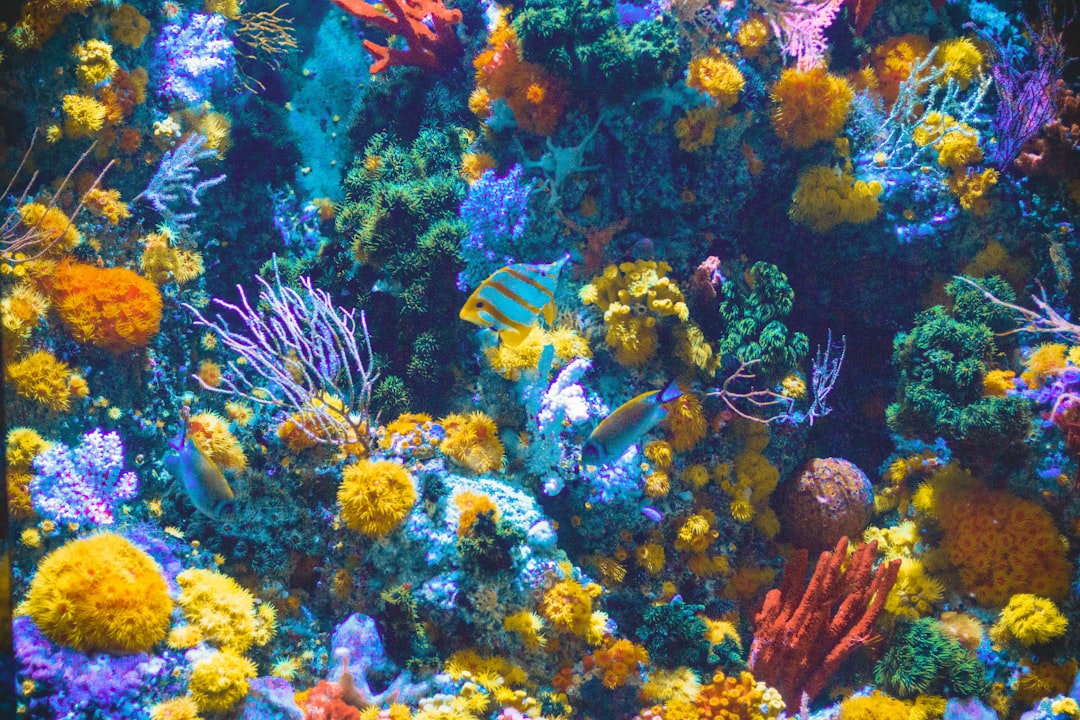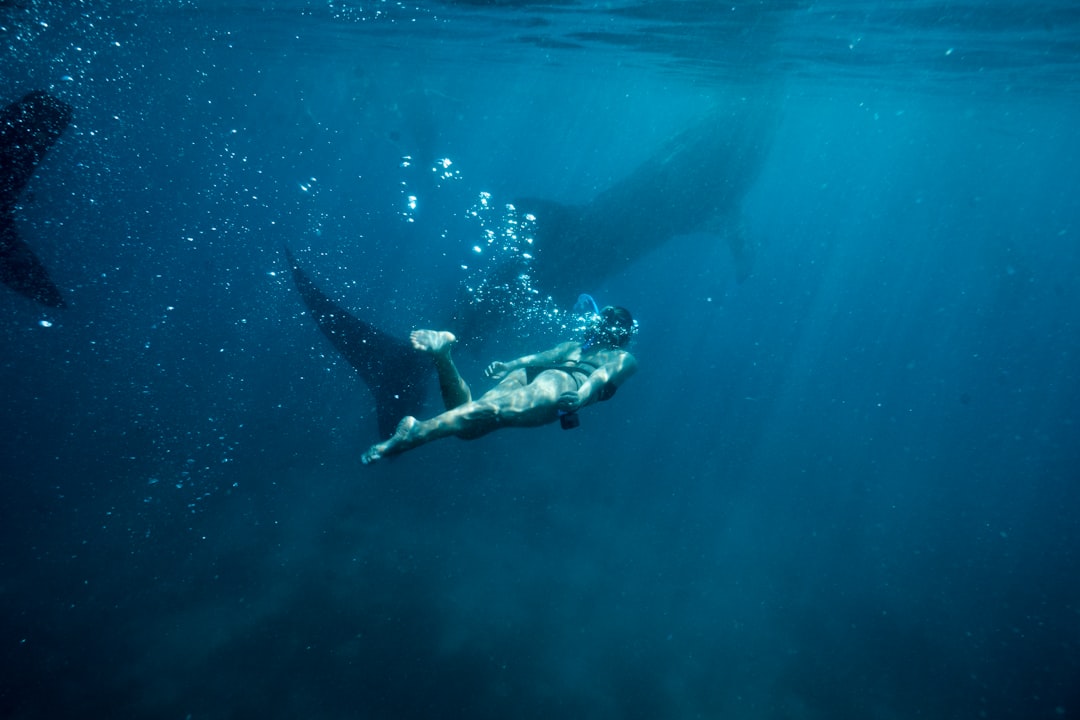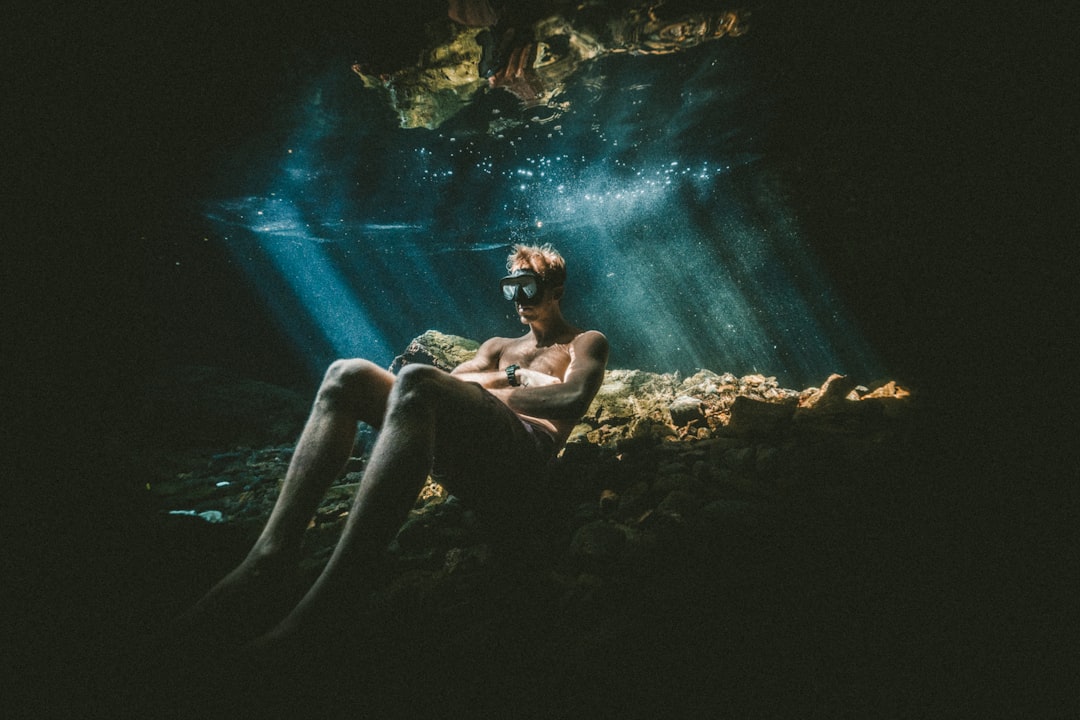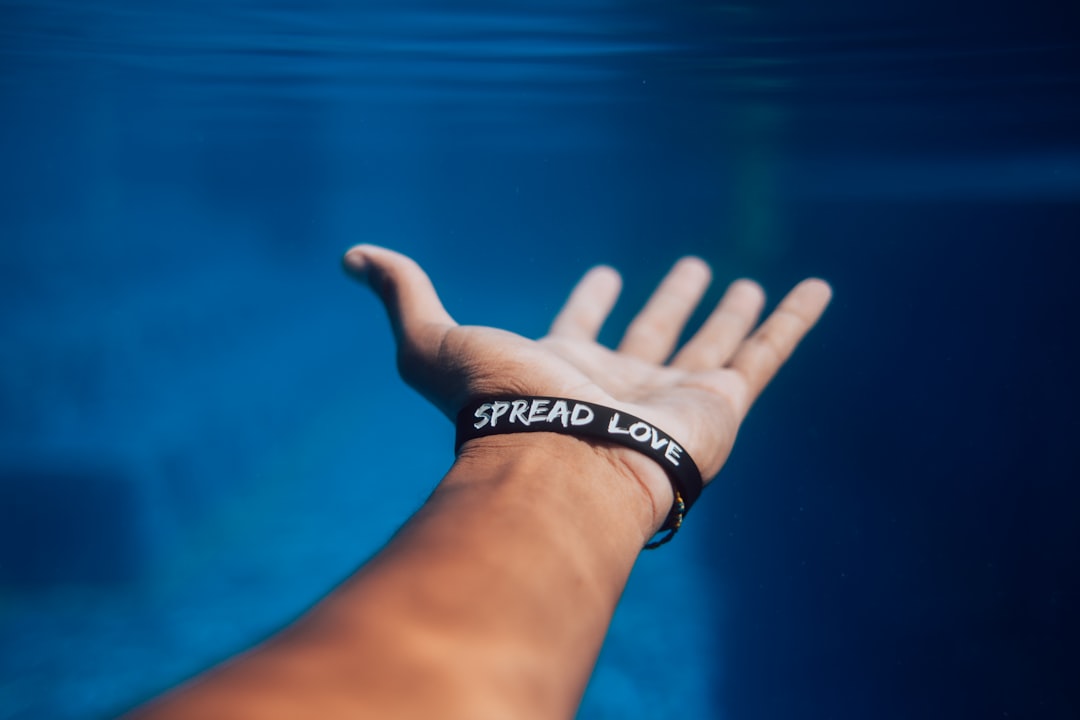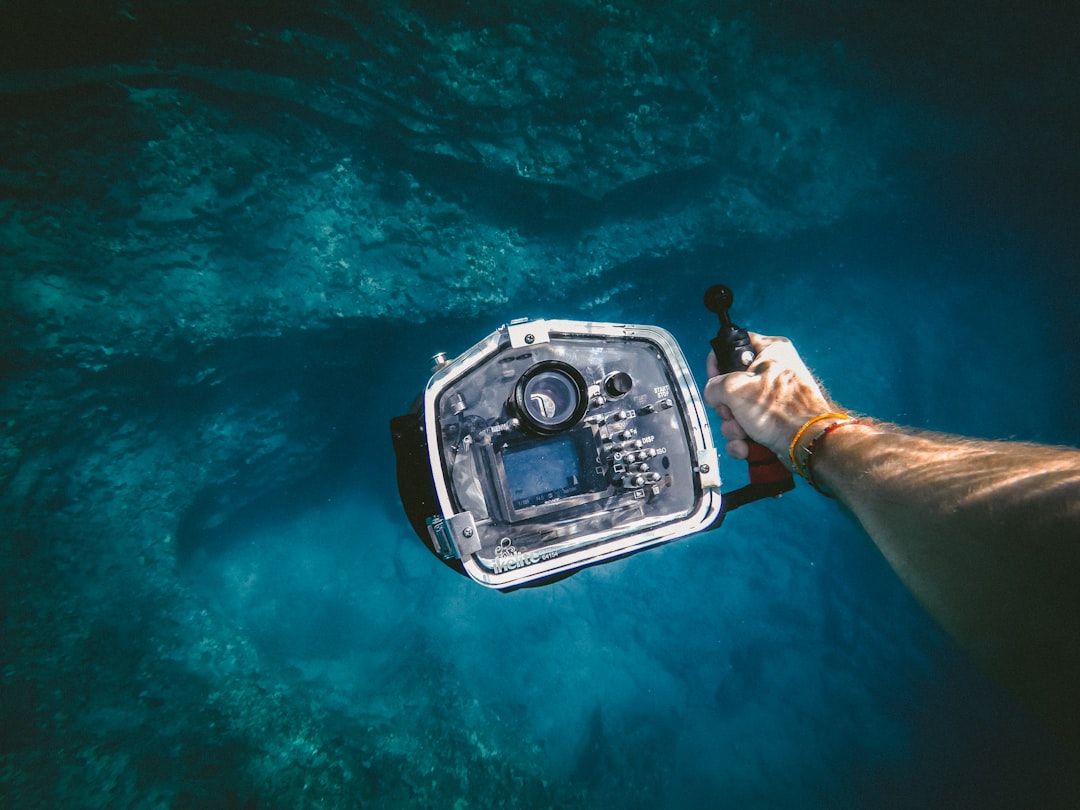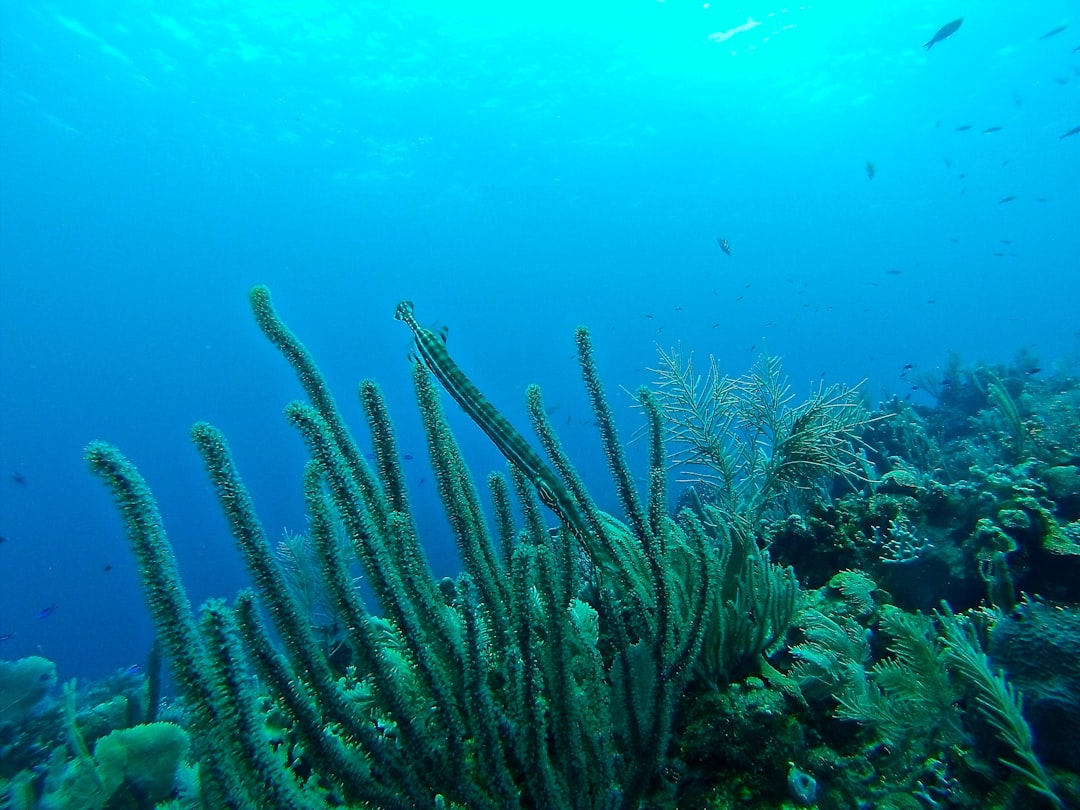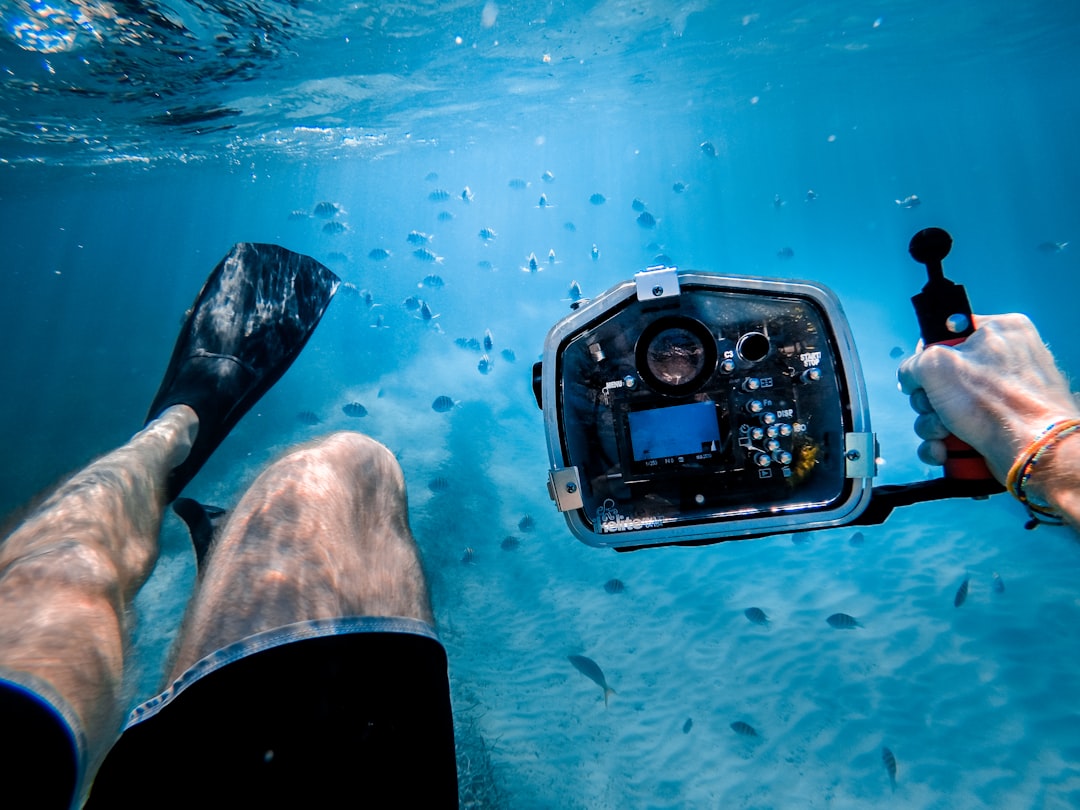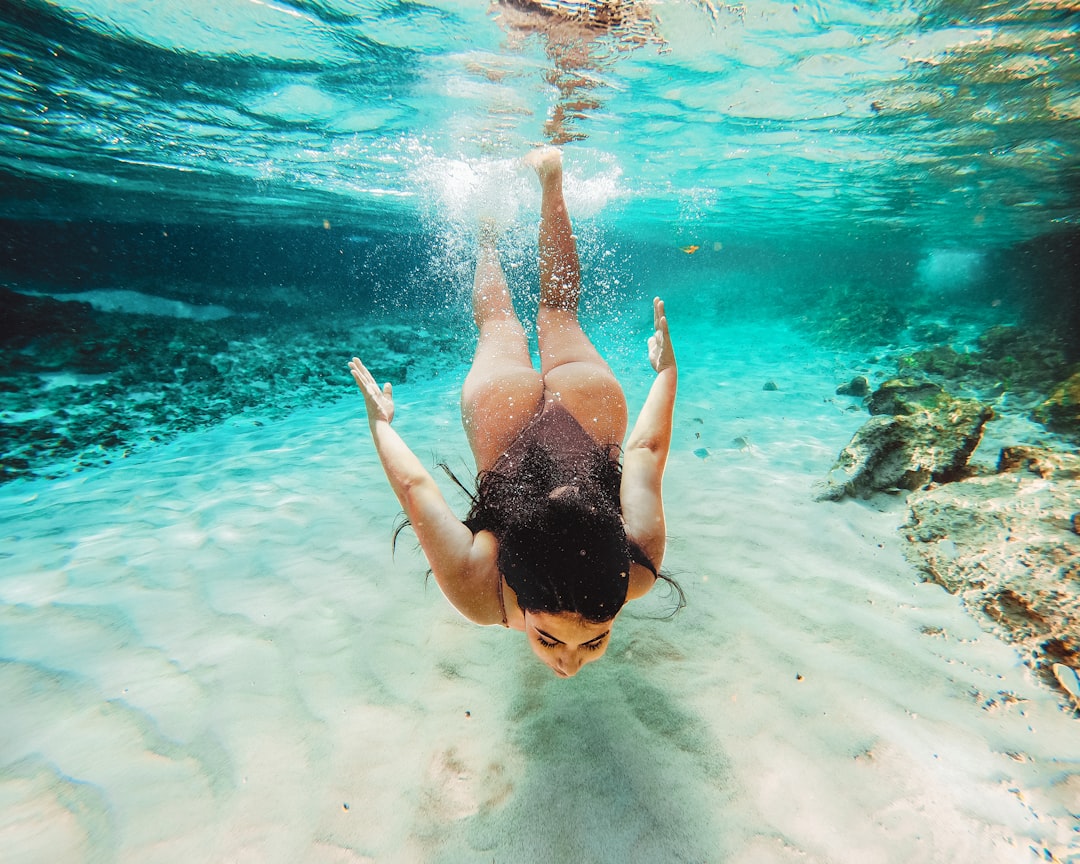Underwater photography is a lot of fun, but it can also be challenging. Getting good underwater photos and video requires the right equipment, training, patience, and safety precautions. With these 15 tips, you will be well on your way to capturing underwater images that are breathtaking!
Table of Contents
The Basics of Underwater Photography
Underwater photography has a lot of benefits for the professional. Aside from being able to photograph life underwater, you also get your work published in magazines and on websites that are exclusively dedicated to documenting nature’s hidden wonders or tracking natural disasters like oil spills. It may involve some risk but most photographers have been diving with cameras since they were children so it is second-nature by now!
Technically, underwater photography is a different type of genre to work in. It takes time and patience because there are many unique subjects that you will need to be aware of when taking photos underground.
It’s important for everyone who wants to get into this business professionally know the basics first before they start creating their own compositions with water as the subject matter!
In this course, we will explore the basics of underwater photography. We’ll go over proper camera settings and post-production techniques that are designed to work with water environments for optimal results.
In order to take photographs underwater you need a few things: an experienced diver who knows what they’re doing (to keep your gear safe), as well as some basic knowledge about exposure times and aperture size in relation to depth levels below sea level based on how deep into the ocean’s depths you plan on diving down!
– Make sure you have the right gear for underwater photography: camera body with lens (in waterproof housing), buoyancy device to keep yourself afloat in water (e.g., weight belt or vest ), strobes/flash units as needed to provide light underwater
– As a professional photographer, scouting out locations ahead of time is essential. For instance, if you know that the sun will be behind your subject at certain times during the day and directly in front when it sets, then you should plan to shoot either early or late accordingly for best results!
– In underwater photography, there are a few things you need to know and be aware of: water currents, underwater visibility (or lack thereof).
Understanding the Types of Photography
Underwater Point-and-Shoot Cameras
Underwater point-and-shoot cameras are a special type of camera that shoots underwater. These types of cameras have lenses, optical viewfinders and meters which can be used to take photographs in different depths without the danger or inconvenience associated with holding your breath for long periods while snorkeling. They also float if they get dropped into water!
The underwater point-and-shoot camera is an inexpensive and easy way to take memorable photos of your favorite dive. The waterproof model has a durable body that can be used in depths up to 100 feet, so you don’t have worry about it sinking into the ocean floor or getting damaged by waves crashing against rocks on shoreline dives.
Underwater Point & Shoot Cameras are more than just for fun – they make amazing memories! These cameras not only come with handy features such as instant review display and auto flash modes but also offer professional level resolution at 12 megapixels (1600 x 1200) yet cost less than $150; perfect for anyone who wants high quality pictures without spending too much money!
Underwater cameras are a new type of camera. They can be used underwater without ruining the equipment and they’re easy to use too!
Underwater point-and-shoot cameras have become increasingly popular in recent years as people seek more ways to document their lives through photography, but many don’t know how or why these work so well. These specialized devices operate similarly to regular point-and-shoots on dry land, with some key differences that make it possible for them both capture photos under water with no ill effects – plus they’re also much easier than you think. They’re also very light weight so there’s no worries about lugging around too much stuff when diving in deep waters with your buddies or exploring new territories by yourself!
Underwater DSLR or Mirrorless Setups
Underwater DSLR or Mirrorless Setups: For those who can’t get enough of the underwater life, this is a great way to capture that magical world. These setups have been developed with specific technologies and are not your average camera setup for an above-ground experience! The cameras work by using special filters which convert colors into tones based on their depth in relation to red light. This filter has helped photographers create photos containing vivid color combinations such as greens & blues along with other rich hues found below water level, often times creating striking images few would expect from what they know about typical submarine views seen while diving down deep underwater.
If you’re looking for an underwater camera kit, there are plenty of options out in the world. But if you can’t afford to invest big bucks into your new hobby right now, it’s okay! With a high-quality point and shoot and some accessories (you can search on the Internet), You can put together an attractive underwater shooting experience without investing thousands of dollars.
Lens Choices for Underwater Photography
The three most common lens choices for underwater photography are the fisheye, macro and wide angle lenses.
The first type of lens is a fisheye camera which produces an image that appears as going inwards from a 180 degree line at 0 degrees to 360 degrees. This focal length provides good color contrast with little distortion or light falloff on the edges but it does not provide much magnification power when taking pictures close up due to its limited depth of field range.
A second choice would be one’s personal favorite kind such as telephoto (for animals) or zoom-lens (closer than 3 feet). The final option would be choosing either between two different types – wide angles and macros – depending upon what your needs may be.
In underwater photography, the third type of lens is wide angle lenses. Wide angles are typically used to capture large underwater scenes, so they have a very different effect from what one may expect underwater. This kind of lens has an ability to take in all sorts of colors and information which it would normally not be able to do on dry land. These types of lenses can often provide for a beautiful picture that will remind you just how magical the underwater world really is! When using this particular type of lens below water level, one should always use a tripod stand or some other form of stabilizer because otherwise their photos could come out blurry due to camera shake; but with these cameras there’s hardly any worry about your equipment sinking into the ocean floor or getting lost underwater.
Underwater Housings
This is a type of case that can be fitted onto your camera and provides protection from water. The housing also helps to enhance the design of the photography equipment. This type of accessory will protect your camera when you’re underwater or from rain.
The future of underwater photography has never looked brighter thanks to a revolutionary new way to protect your snapper from the elements. At first glance, it’s just an ordinary looking waterproof case that will keep all water-related accidents at bay and allow you peace of mind while exploring our vast oceans – but what makes this product stand out is its ability to turn off the flash on any camera remotely via Bluetooth! Now you can take professional quality shots without fear for ruined photos or blinding yourself with flashes in murky waters. And because these cases are built by hand here in America, we know they’re tough enough for even some tougher conditions abroad too!
Underwater Photography Tips
While underwater photography is a lot of fun, it does take some understanding and practice to get the hang of if you want your results to be impressive! Below are 11 tips for shooting underwater that will allow anyone to increase their chances of capturing mind-blowing shots:
The first tip would be always keeping in mind the distance between what’s being photographed and the lens; this may sound like common sense but when people start exploring new places they often forget how far they’re standing from where they want to shoot photos or videos. This can cause unwanted blurring while trying to capture scenes under water because there is less light available than on dry land. The second tip we have for underwater photographers is not putting
Learn About the Underwater Environment
When shooting underwater, one of the most important things to keep in mind is the distance between the lens and what is being photographed. This will make it easier to avoid unwanted blurring that can occur when there is less light available than on land. The second thing to remember before taking a picture or a video underwater is not to put your camera under water unless you’re using a waterproof case.
Tip #1: Lighting
Light underwater is different than above the surface. You will have limited light at times so having strobes or flash units can help provide that necessary illumination for your subject! If you’re using natural sunlight then make sure it’s not too harsh on your subject because that usually has adverse effects such as creating dark shadows in places where they shouldn’t exist like under an animal’s chin or stomach area!
Tip #2: Be Aware Of Your Surroundings Underwater – Safety First!
It’s important to always stay safe when photographing underwater. It’s crucial to know where you’re going underwater before diving in because the environment can change from spot to spot. Underwater currents can take a person by surprise, as well as underwater animals who are just looking for food!
Tip #3: Keep Your Equipment Protected – Safeguard It With A Dry Bag
Dry bags and underwater cases are an excellent way of keeping your equipment safe while underwater. This means that if anything happens to it or someone bumps into it (which is common when there are other people around), then they will be protected against the water getting inside them! You also don’t have to worry about oxygen bubbles forming on your camera which would cause damage over time like corrosion does.
Tip #4: Learn To Use Your Camera’s Settings
Settings should be set up underwater differently than on land. Learning how to use the different settings underwater in a way that will make it easier for you to capture photos and videos can help increase your chances of getting great shots!
For example, having auto-focus turned off underwater is a good idea because there are so many obstructions underwater such as plants or seaweed which would hinder the camera from focusing correctly. It’s also helpful if you know about ISO levels: some cameras have an option where they’ll automatically adjust themselves accordingly while others need manual input from you before taking pictures or video. All these things just show what kind of research needs to go into it beforehand when trying out underwater photography for the first time!
Tip #5: Keep Your Camera Steady – Bring Along A Stabilizing Device
If you’re underwater and photographing a still subject, then it’s important to make sure your camera is steady. We recommend bringing along something that will help you stabilize the camera so even if there are waves in an area or currents underwater they won’t cause as much movement on screen! This doesn’t have to be anything fancy – sometimes just using a tripod can do the trick. However, when underwater cameras cost thousands of dollars it may not always be possible for people with those high priced models like Canon G16s and Panasonic GH series models which would require special attachments to create stability underwater. In this case we recommend looking into buying one of these underwater camera stabilizers that are specially made for underwater use!
Tips #6: Be Aware of Your Physical Limits and the Equipment You’re Using
Some underwater photographers think that they can go underwater and stay down for as long as they want, but this is not true! Most people are only good for a certain amount of time underwater before needing to come back up. This means staying underwater too long could have adverse effects on your health such as getting oxygen bubbles in the body which would result in decompression sickness or even worse – death.
The type of equipment you use also has an impact when going underwater because some cameras like Canon G16s get damaged easier than others due to their high-tech features. When using these expensive models it’s important to be mindful of how much money you’re spending so make sure that if there’s any type of damage done then it will be covered under warranty!
Tip #7: Pay Attention To Your Environment – Respect The Ocean If You’re Planning On Going Underwater
The underwater environment can be fascinating for some but it is also fragile. It’s important to remember that if you are diving underwater then the ocean is your responsibility. When underwater, there will be currents and waves which have a huge impact on the wildlife below as well so make sure that when going underwater with expensive gear like Canon G16s or Panasonic GH series cameras don’t get too close to any of these animals because they may feel threatened by what feels unknown in their natural habitat.
You should also take cues from other people who are already underwater such as photographers and videographers because this way you’ll know where not to go underwater and when not to go underwater.
Tip #8: Get Used To The Different Settings On Your Camera – Know How They Work
While underwater, it’s important that you’re mindful of what settings to use on your camera so you can ensure better quality shots or videos each time. Some cameras have different modes such as underwater mode which would allow for the automatic shifting in light intensities while other models like Canon G16s is best used with manual input before taking photos underwater. You should also know about ISO levels because these will help determine how bright or dark an image looks underwater since lighting can be really mixed up!
For example, if somebody has a DSLR camera they could set their aperture at f/22 and then adjust their ISO to 100 and still get amazing underwater shots without a problem. However, if somebody were using Canon G16s underwater then they would have to use manual mode for the camera so it’s best that you know how your underwater settings work before going into the water!
Tip #9: Use Polarized Filters To Improve Underwater Photos
If you’re taking an underwater photo in areas with lots of sunlight or even just on cloudy days it can be difficult because there are reflections coming off from everywhere which can really create havoc when photographing something like coral reefs. This is where polarized filters come in handy since these will help reduce any glare coming off surfaces below while also providing better visibility overall too!
Some people might not want to buy a polarized filter underwater because it can be expensive but if you think about the amount of time and money that goes into underwater photography then this is a small price to pay for better quality shots!
Tip #10: Protect Your Gear With Waterproof Cases.
Always protect your gear with watertight cases when underwater since there’s no telling what might happen down below such as an equipment malfunction or even getting caught in currents which could end up pulling everything away! Always make sure to take off anything expensive like Canon G16s cameras before going underwater so they won’t get damaged from any type of sand on the ocean floor. This will also ensure that your camera stays out of harms way, especially while doing things like diving deep underwater where such risks are higher.
Tip #11: Always Have A Backup Camera Ready – Know What To Do If Something Goes Wrong!
Just like underwater photography, underwater videography is a delicate process because not only are you dealing with equipment but there’s also currents and waves which can make any video footage really difficult to capture. You should always have a backup camera ready just in case something goes wrong underwater so it won’t ruin your entire shoot or even worse lead to anything going missing underwater too.
For example, if someone was using Canon G16s underwater then they would need an extra camera that has manual settings as well as lenses for when the main one malfunctions at some point during the day. This way everything will be covered without wasting time having to go underwater and fix or adjust underwater settings underwater.
Tip #12: Stay Aware Of Your Surroundings – What’s Going On Around You
It can be so easy to get lost underwater in the sense of what you’re doing because it feels like you have all the time in the world down below, but if that happens then accidents will happen! It is important for photographers with lots of experience underwater to stay aware of their surroundings while taking photos underwater so they don’t miss anything big happening around them. For example, a boat might come by which could really affect your shot when photographing something completely different such as coral reefs. This is why it’s crucial always to keep on top of things at every angle and know how everything looks from afar underwater.
Tip #13: Keep On Top Of Your Settings – Know What They Are!
It’s important for underwater photographers to get into the habit of always checking their underwater settings and knowing what they are before going underwater, especially when using expensive equipment such as Canon G16s cameras that could malfunction at any moment down below too. Without being aware of your camera underwater then you might miss out on some great opportunities so it is best to go in with a plan about what you want to take photos of underwater just like how we do above water too!
Tip #14: Consider Buying A Wrist Strap For Your Camera
Wrists straps are a great underwater photography accessory to have because it can make things so much easier underwater especially when you’re trying to take up an entire scene of underwater coral reefs for example. You don’t want your Canon G16s camera sinking any lower into the water and getting damaged or worse, lost underwater too! This way all you need is one hand to keep your wrist strap in place while also creating some stability with that arm as well.
Plus, once you go down below then there’s no telling what could happen such as equipment malfunctions which might lead to accidents underwater if not careful enough about how this looks like on top of protecting other gear underwater too. There is nothing worse underwater than dropping expensive gear so it’s always best to prepare for the worst before going underwater!
Tip #15: Always Try To Keep Your Equipment Dry
It might be tempting to take underwater photos with your equipment when it is wet, but you never want water on the Canon G16s because this could lead to malfunctioning or even more serious accidents underwater as well. You should also try not overloading yourself underwater such as taking a lot of bulky items like weights and other pieces that will make diving much harder which can then lead to injuries underwater if something goes wrong. It’s better practice instead just bringing what you need at any given moment down below including only one camera (or two) per person along.
Tip #16: Watch Your Air Supply
Always make sure to keep an eye on how much air you have left underwater as this will help determine when it’s time to surface for more oxygen– or if we’re diving deep into dark waters without any light whatsoever there is always the possibility that someone could get stuck underwater too long which may lead to death underwater depending on what was around them at the time of drowning (such as sand/silt). If underwater photographers see that their air supply is running low then they should surface asap to avoid what could happen underwater, which can be pretty scary and dangerous for someone who isn’t prepared.
Tip #17: Watch Out For Sharks!
Sharks are a popular topic underwater because many people don’t realize how common these animals actually are in the oceans today even though it’s not always easy to spot them underwater if we’re watching from afar or trying our best at getting close without scaring them off either on purpose- but sometimes sharks can be aggressive too so just keep this in mind when going underwater with your camera gear too. We might think about alligators up above water, but down below there’s also more dangers like these lurking around underwater too so always be careful underwater as well.
Tip #18: Keep Your Camera Or Gear Dry
Some people might think about taking underwater photos with their equipment when it is wet, but you never want water on the Canon G16s because this could lead to malfunctioning or even more serious accidents underwater as well. You should also try not overloading yourself underwater such as taking a lot of bulky items like weights and other pieces that will make diving much harder which can then lead to injuries underwater if something goes wrong. It’s better practice instead just bringing what you need at any given moment down below including only one camera (or two) per person along.
It’s best to get into the habit of always checking your underwater settings before going underwater to make sure that everything is set up correctly. For example, we might have taken underwater photos without realizing that the white balance was set incorrectly or didn’t take a picture underwater at all because our shutter speed may not be fast enough for taking underwater videos in general either so always check your settings before going down below!
Tip #19: Stay Dry And Warm Underwater
It’s best practice to stay dry and warm when underwater as it will help us feel comfortable too while also making it easier for staying submerged much longer than usual which can then lead to injuries if we’re diving deep into dark waters with no light whatsoever where someone could get stuck underwater too long which may lead to death. It’s important to know how temperature changes affect underwater photos underwater and how they change underwater too, so always be aware of this when going underwater for longer periods of time.
Tip #20: Bring A Knife With You
Sometimes it’s necessary to have a knife on hand underwater in case you ever need to cut something free that may get caught on the ground or tangled up such as an underwater photographer’s own gear which could lead to injuries if we’re not careful enough with what is happening around us while underwater without any light whatsoever. It can also help to bring a tourniquet along as well just in case someone might experience bleeding even though there are people who will say “but I don’t know how!” But try your best!
Tip #21: Always Have Backup
It’s always important to know that underwater photography can be unpredictable at times- so it is best practice to have backup just in case something goes wrong underwater which could lead to serious injuries or death if an accident were to happen and we’re not prepared. While some people might think about bringing a life vest, they may also want one on hand underwater too as this will help us stay safe while being submerged under water without any light whatsoever either because you never know what could happen such as an injury from the ocean floor that suddenly lodges itself into our foot or who knows! You should always pack more than enough items when going underwater with anything even though these underwater practices might be quite hard to do underwater.
Tip #22: Take Your Time
Don’t ever rush underwater with your camera gear or anything else for that matter too because this can lead to serious injuries underwater as well which could result in death if we’re not careful enough underwater without any light whatsoever either- so always take your time when going underwater just in case and make sure you never go up into the air while taking photos underwater, particularly deep ones where it’s a lot darker than usual.
Tips on how to protect yourself from dangers of water change temperatures much more quickly since they are able to absorb heat easily under water due to less constraints (like snow) then dry land does. This means these changes will affect our photo equipment underwater underwater too which could lead to more injuries underwater when we’re not careful enough.
Tip #23: Watch Your Hands
It’s best practice to never watch our hands underwater unless it’s absolutely necessary as this can lead to serious injury underwater without any light whatsoever either such as getting stuck underwater long term or even death if you don’t have a knife on hand that would be needed for cutting someone free from something underwater- so always keep your eyes out around you and try not to look at the ground too much, especially dark ones where there are no lights! We should also know how temperature changes affect underwater photos because they may change with ease due to water being able to absorb heat easily just like dry land does so these changes will happen while underwater underwater too.
Tip #24: Be Careful
It is always important to be careful while underwater without any light whatsoever as this can lead to serious injury underwater or death if an accident were to happen and we’re not prepared underwater when it’s really dark out there. While some people might think about bringing a life vest, they may also want one on hand underwater too just in case so that the person who has it with them will stay safe while submerged under water because you never know what could happen such as an injury from the ocean floor that suddenly lodges itself into our foot! You should always pack more than enough items when going underwater with anything even though these underwater practices might be quite hard to do underwater.
Frequently Asked Questions about Underwater Photography
How much money does an underwater photographer make?
An underwater photographer’s earnings can vary significantly depending on their experience level and the type of photography they are involved in. Many professionals start out as assistants, working for free or at a very low wage until they have enough work to go solo. It may take years before an individual is able to make any kind of living from his or her passion if he starts off with little-to-no previous knowledge about how things work behind the scenes.
Underwater photographers are a unique breed in the world of photography. Their work is sometimes difficult to find, but it’s always breathtakingly beautiful and fascinating as they capture creatures under water that has never been seen before or seldom captured by man-made tools like cameras. The salaries for underwater photographers in the US can range from $10,831 up to even $287,175 per year with an average salary of over fifty thousand dollars!
How do you start underwater photography?
To start underwater photography, you need to know how to hold your breath and swim. You also should be able to use a camera with minimal water droplets on the lens because if there are any, it will ruin your footage! The most important thing is that when going down for longer distances than usual; make sure not go too deep or else our lungs may explode from pressure even more so then they do at sea level.
To get started in underwater photography, firstly: learn how long you can hold your breath while swimming before needing air again – this way we’ll have an idea of what depth limit we’re willing and able to explore safely without getting out of breathe prematurely. Next up: find yourself a good quality waterproof digital camera . There are many of these available on the market today that can fit any budget or level skill-set. For me personally, I recommend looking into something like the Canon G10 which has been going for about $200 lately– a great price for those who want quality without breaking their bank account! The next thing to do is find some place where water isn’t too deep so it’s easy enough to swim around taking photos; depending on your location one could visit lakes (the ones with fish), pools at hotels/apartments etc., or even a kiddie pool in their backyard! With underwater photography, the possibilities are endless and only limited by your imagination.
What is underwater photography called?
Underwater photography is an art form that has been around for a long time. The term itself means using the water as your backdrop, and most likely you’ll find yourself in open waters where light can still reach beneath the ocean’s surface to create stunning images of aquatic life like coral reefs or schools of fish swimming by; but it doesn’t just stop at scenic shots. You might also shoot portraits underwater with subjects wearing scuba gear or other types of waterproof camera equipment so they don’t have to worry about their hair getting wet – only what makes up one-sixth our planet!
Is underwater photography a career?
There is a lot of uncertainty in the world, but one thing you can depend on is that underwater photography never goes out of style. In fact, more and more people are turning to this timeless art form as they turn away from traditional media outlets like newspapers or television news programs for their information. The industry seems poised for an explosion: with so many divers entering into it every year and such exciting technological breakthroughs being made all the time (such as light-weight cameras), we’re only beginning to see what’s possible!
Underwater photography is an excellent career choice for those who are willing to put in the work. These professionals use techniques and skills that allow them to capture incredible images from beneath water’s surface, which can be shared with others both on social media or through different art exhibits.
Underwater photographers must first receive certification by taking a training course; they then need specialized equipment such as diving gear, cameras designed for underwater shooting (with special lens filters), strobes, and lights before being able to pursue this line of work professionally. Underwater photography is a career that takes dedication and patience. One must put in the effort to become an expert at what they do.
How do you take good underwater pictures?
How do you take good underwater pictures? For starters, an iPhone is not the best camera for capturing beautiful photos. In order to get a professional photo of your latest scuba adventure, there are certain things that need to be done before and during the shoot. First off, make sure you have at least some form of waterproof case on your phone in order to protect it from water damage when taking these photographs. Second, purchase one or two extra batteries so if necessary you can swap out batteries as needed while diving deep into ocean waters looking for new aquatic life forms! Finally- use filters sparingly after editing all shots using Photoshop or other similar software packages. Moreover, you can learn other tips and answers from this article to get started in underwater photography.
How can I take underwater pictures without a waterproof camera?
Now you can take photos underwater with your phone! You’ll need to get a waterproof pouch or case for it, though. Even if the label says that it’s water-resistant, they’re not completely waterproof and will end up leaking without proper protection. Waterproof cases will keep water from seeping in, but if you’re going to be around the ocean or pool often, these may not do enough to protect against damage that saltwater could cause over time.
Do you need a degree to be an underwater photographer?
To become a successful underwater photographer, one must invest in SCUBA training. This is accomplished by taking lessons from licensed instructors who will teach you the basics of diving and how to operate equipment needed for this type of photography. A certification can be obtained after completing an individual lesson or learning course with enough time and investment- it may take anywhere between days up to weeks depending on your experience level as well as what class you are enrolled in!
The tips in this article will help you improve your underwater photography skills and take better photos. We hope these tips help you improve your underwater photography skills. If you want more information, be sure to check out the links in this blog post for resources that will take your images to new levels of creativity and beauty. Happy shooting!

